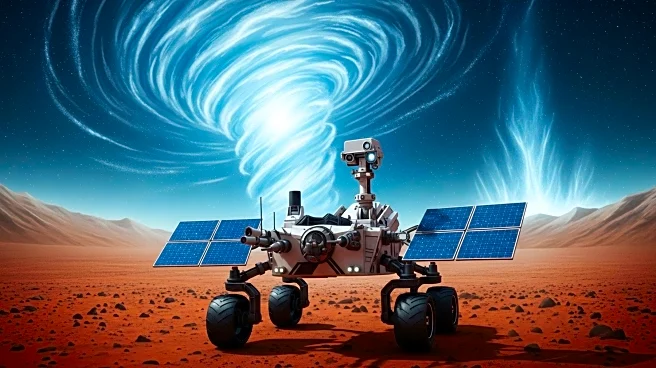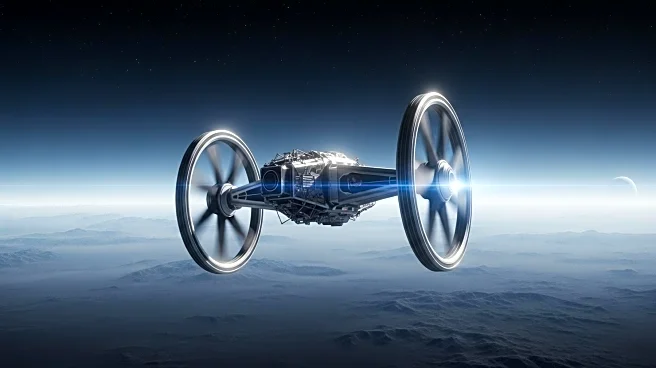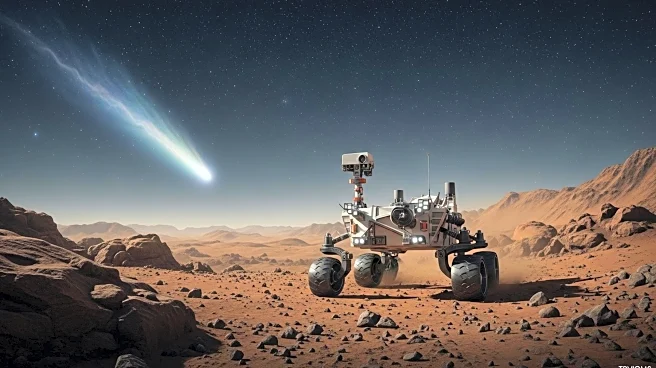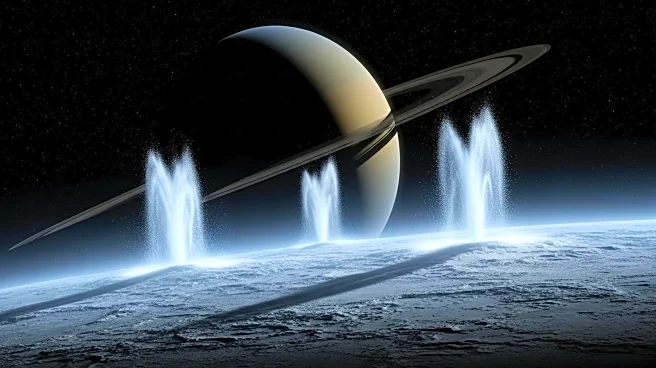What's Happening?
A reanalysis of data from NASA's 1978 Pioneer Venus mission has revealed that Venus's clouds contain significant reservoirs of water and iron, challenging previous assumptions about the planet's atmosphere. The study, led by researchers from California State Polytechnic University, Pomona, utilized modern techniques to analyze aerosols collected by the Pioneer Venus probe. The findings indicate that the cloud aerosols are composed of approximately 60% water, 20% iron sulfate, and 20% sulfuric acid, suggesting a less acidic and more water-rich environment than previously thought. This discovery has implications for the potential habitability of Venus's clouds and the planet's atmospheric chemistry.
Why It's Important?
The presence of water and iron in Venus's clouds could reshape scientific understanding of the planet's atmospheric conditions and its potential for supporting life. The findings suggest that Venus's atmosphere may be less hostile than previously believed, opening new possibilities for astrobiology research. The study also highlights the importance of reanalyzing archived data with modern techniques, which can uncover hidden insights and challenge long-standing assumptions in planetary science. This research may influence future missions to Venus, as scientists seek to explore the planet's atmosphere and assess its potential for habitability.
What's Next?
Future missions to Venus, such as NASA's DAVINCI and VERITAS, and the European Space Agency's EnVision probe, are expected to provide more detailed observations of the planet's atmosphere and surface. These missions may confirm the presence of water and iron-bearing compounds in Venus's clouds, potentially rewriting planetary science textbooks. Researchers may also focus on developing new models to understand the planet's climate and atmospheric chemistry, considering the implications of these findings for the potential habitability of Venus.
Beyond the Headlines
The discovery of water and iron in Venus's clouds raises questions about the planet's atmospheric evolution and the role of cosmic dust in shaping its chemistry. It also prompts discussions on the potential for microbial life in the planet's mid-level clouds, where conditions may be more favorable. The study underscores the value of revisiting historical data with modern analysis tools, which can lead to groundbreaking discoveries and enhance scientific understanding of planetary environments.










